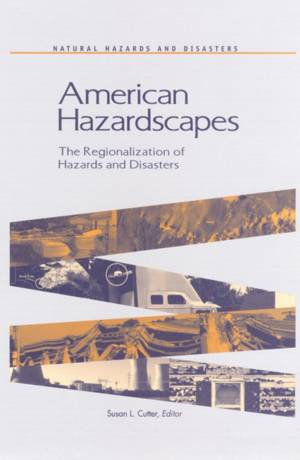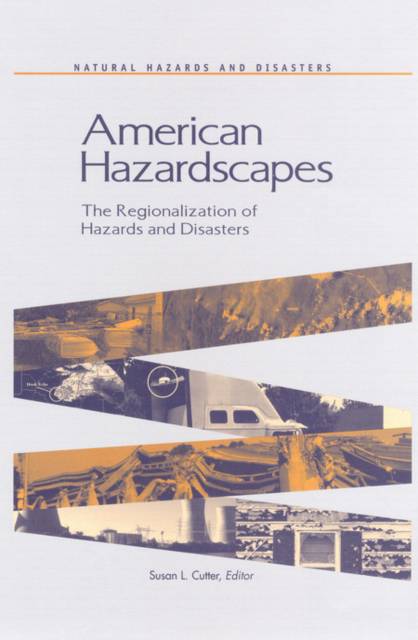
- Afhalen na 1 uur in een winkel met voorraad
- Gratis thuislevering in België vanaf € 30
- Ruim aanbod met 7 miljoen producten
- Afhalen na 1 uur in een winkel met voorraad
- Gratis thuislevering in België vanaf € 30
- Ruim aanbod met 7 miljoen producten
Zoeken
American Hazardscapes
The Regionalization of Hazards and Disasters
€ 59,45
+ 118 punten
Omschrijving
Barrier islands. Flood plains. Earthquake faults. Sometimes the environment poses threats to our well being, yet many of us continue to choose to live in risky or dangerous places. And on top of the "knowns" are the other, more hidden hazards related to environmental contamination that pose equally serious threats to our health and well being.
But where are these places and what types of hazards are found there? American Hazardscapes examines the risks associated with living and owning property in diverse regions across the United States, offering dual perspectives: that of the geographer and that of the social science hazards researcher. The book summarizes what we already know about regional patterns of hazard events and losses during the previous three decades and goes further to shed light on the nature of the events themselves and their impact on society.
Written for the relocating citizen and the policy maker alike, American Hazardscapes presents a regional ecology of disaster-prone or disaster-resistant states. It also offers thoughts on what local, state, and federal managers need to do to meet the challenge of reducing hazard losses in the next century.
But where are these places and what types of hazards are found there? American Hazardscapes examines the risks associated with living and owning property in diverse regions across the United States, offering dual perspectives: that of the geographer and that of the social science hazards researcher. The book summarizes what we already know about regional patterns of hazard events and losses during the previous three decades and goes further to shed light on the nature of the events themselves and their impact on society.
Written for the relocating citizen and the policy maker alike, American Hazardscapes presents a regional ecology of disaster-prone or disaster-resistant states. It also offers thoughts on what local, state, and federal managers need to do to meet the challenge of reducing hazard losses in the next century.
Specificaties
Betrokkenen
- Uitgeverij:
Inhoud
- Aantal bladzijden:
- 227
- Taal:
- Engels
- Reeks:
Eigenschappen
- Productcode (EAN):
- 9780309074438
- Verschijningsdatum:
- 1/02/2002
- Uitvoering:
- Hardcover
- Formaat:
- Genaaid
- Afmetingen:
- 161 mm x 237 mm
- Gewicht:
- 494 g

Alleen bij Standaard Boekhandel
+ 118 punten op je klantenkaart van Standaard Boekhandel
Beoordelingen
We publiceren alleen reviews die voldoen aan de voorwaarden voor reviews. Bekijk onze voorwaarden voor reviews.










